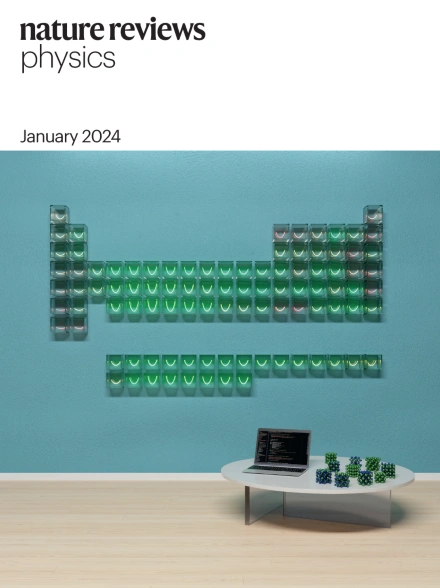量子色动力学逆问题的物理驱动学习
IF 39.5
1区 物理与天体物理
Q1 PHYSICS, APPLIED
引用次数: 0
摘要
深度学习技术和物理驱动设计的整合正在改变我们解决逆问题的方式,即从复杂的观测中提取准确的物理性质。这与量子色动力学(QCD)——强相互作用理论——特别相关,因为它在解释观测数据和要求计算方法方面存在固有的挑战。这个观点强调了物理驱动学习方法的进步,重点是对QCD物理物理量的预测,并将其与机器学习联系起来。物理驱动的学习可以在概率框架中更有效地从数据中提取数量,因为嵌入先验可以减少优化的工作量。在应用第一性原理晶格QCD计算和强子、中子星和重离子碰撞的QCD物理中,我们重点学习物理相关的物理量,如完美作用、谱函数、强子相互作用、状态方程和核结构。我们还强调了超越QCD物理的生成模型的物理驱动设计的潜力。将物理先验集成到机器学习中可以提高效率,减少数据需求并产生可靠的结果。本展望探讨了物理驱动的学习和生成模型的逆建模,为量子色动力学中的逆问题提供了解决方案。本文章由计算机程序翻译,如有差异,请以英文原文为准。

Physics-driven learning for inverse problems in quantum chromodynamics
The integration of deep learning techniques and physics-driven designs is reforming the way we address inverse problems, in which accurate physical properties are extracted from complex observations. This is particularly relevant for quantum chromodynamics (QCD) — the theory of strong interactions — with its inherent challenges in interpreting observational data and demanding computational approaches. This Perspective highlights advances of physics-driven learning methods, focusing on predictions of physical quantities towards QCD physics and drawing connections to machine learning. Physics-driven learning can extract quantities from data more efficiently in a probabilistic framework because embedding priors can reduce the optimization effort. In the application of first-principles lattice QCD calculations and QCD physics of hadrons, neutron stars and heavy-ion collisions, we focus on learning physically relevant quantities, such as perfect actions, spectral functions, hadron interactions, equations of state and nuclear structure. We also emphasize the potential of physics-driven designs of generative models beyond QCD physics. Integrating physics priors into machine learning enhances efficiency, reduces data needs and yields reliable results. This Perspective explores physics-driven learning and inverse modelling of generative models to provide solutions for inverse problem in quantum chromodynamics.
求助全文
通过发布文献求助,成功后即可免费获取论文全文。
去求助
来源期刊

Nature Reviews Physics
Multiple-
CiteScore
47.80
自引率
0.50%
发文量
122
期刊介绍:
Nature Reviews Physics is an online-only reviews journal, part of the Nature Reviews portfolio of journals. It publishes high-quality technical reference, review, and commentary articles in all areas of fundamental and applied physics. The journal offers a range of content types, including Reviews, Perspectives, Roadmaps, Technical Reviews, Expert Recommendations, Comments, Editorials, Research Highlights, Features, and News & Views, which cover significant advances in the field and topical issues. Nature Reviews Physics is published monthly from January 2019 and does not have external, academic editors. Instead, all editorial decisions are made by a dedicated team of full-time professional editors.
 求助内容:
求助内容: 应助结果提醒方式:
应助结果提醒方式:


